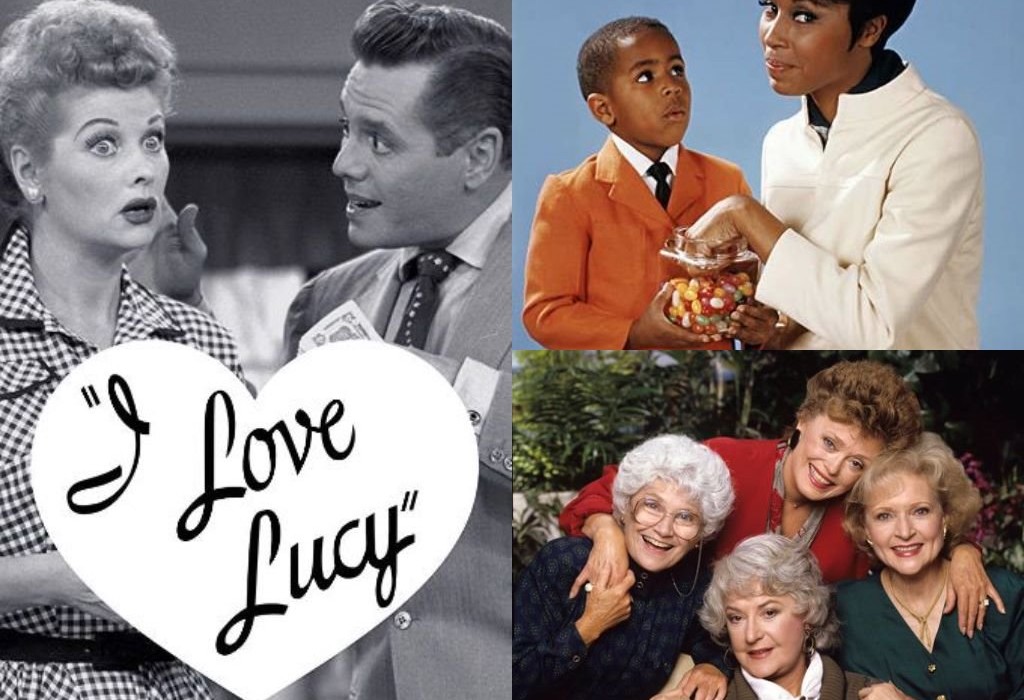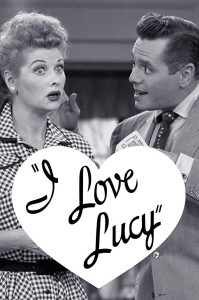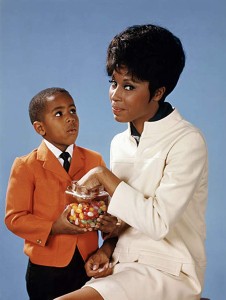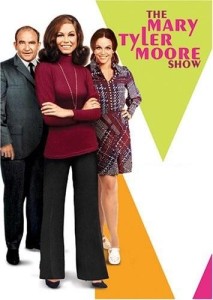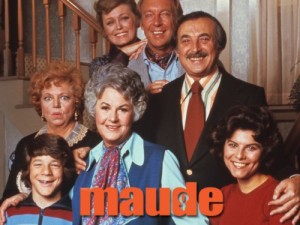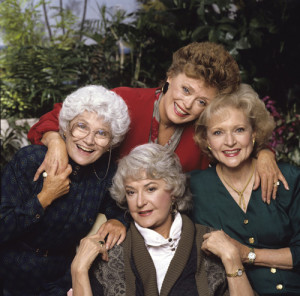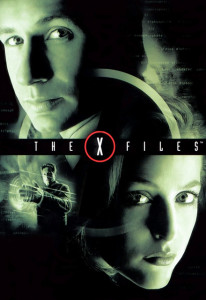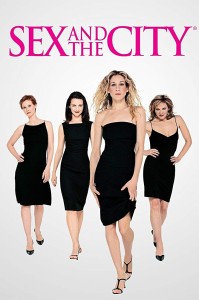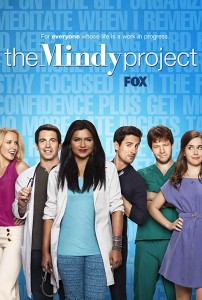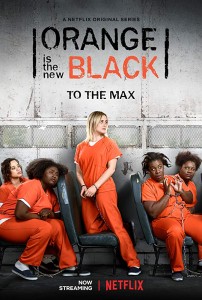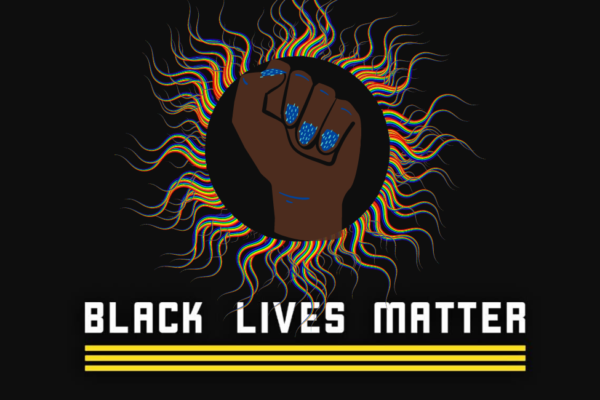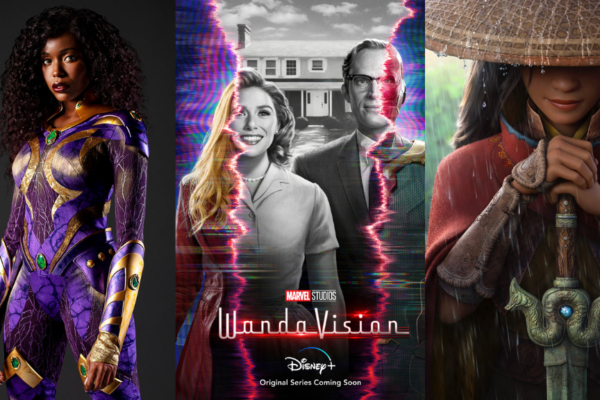Welcome to ‘Monday Musings’!
A new segment from Teenplicity, ‘Monday Musings’ will explore personal interests and thoughts in a multitude of ways. Whether it be through lists, fan interaction, or discussion posts, each week will offer a different topic and new perspective from Teenplicity about what is on our mind. The range of topics, just like our interests, will be vast. Some might be familiar, as it could highlight previous feature stars, while others will discuss uncharted subjects for Teenplicity. They might be fun posts with a silly twist or a more serious discussion about something that could concern you.
The goal is for Teenplicity to become more engaged and involved with our readers. The Teenplicity Team is made up of fans, just like you. Let us know what you care about – a show, a film, music, an event or aspect of your life. There are no limits for what can be explored in ‘Monday Musings’ or how we present it to you.
—
Women in Television
In honor of Women’s History Month, I’ve compiled a short list of women in television, focusing mainly on female-led shows and/or characters who had significant moments. While far from a complete list of all achievements and groundbreaking moments in television, this list includes “firsts” and the impact certain scenes or episodes may have had on society and television.
—
I Love Lucy (1951-1957)
A massive success during its original airing and beloved in the decades after, I Love Lucy left a lasting impact on television in more ways than one. Easiest to be seen is that of the character Lucy Ricardo. During an era where women were caught between the workplace and staying at home, women on TV usually stayed in their typical servient housewife role. The difference of Lucy Ricardo is that while she was a housewife, the show regularly featured her defying her husband’s wishes to pursue her own ambitions. She would even briefly involve herself in a profession on occasion.
Lucy’s eagerness, her failures, and her comedic nature in timing and physical ability heightened each scheme that she concocted. Executing them, despite her husband’s warnings and orders, brought a thrill to Lucy and viewers alike. They rooted for her to follow her ambitions.
This was just one of the many ways I Love Lucy impacted television. The series also showcased one of the first biracial couples on television – something that was a difficult idea to sell to CBS until Lucille Ball told executives that it was either both of them or nothing, according to Kathleen Brady who authored Lucille: The Life of Lucille Ball.
Another way I Love Lucy shaped television is through the friendship between Lucy and her neighbor Ethel. Unlike so many commonplace relationships between two women in Hollywood, jealousy or competition over men and societal status were absent, leaving only their bond. This allowed the two to embark on their own adventures, help each other through troubles, and develop as they grow, making their friendship a breath of fresh air. Often times this led to classic comedic moments, some even being honored and reimagined in media even decades after the fact. If you’ve seen the Drake & Josh episode where they’re eating sushi off of a speeding conveyor belt? Lucy and Ethel did it first.
Less noticeable to many is the way that the series helped shape television behind the camera. Though it was not the first, I Love Lucy popularized the idea of a multi-cam sitcom. This allowed for one camera to do a wide shot of the set while two or more cameras focus on closeups. It eliminated the need for an excess of takes and with the lighting design that was created for this, it also eliminated shadows and the time to reset the shots.
I Love Lucy also popularized the use of live audience and their reactions in sitcoms as opposed to the recorded laughter that was used back then and can even be heard in a number of television sitcoms for shows with younger demographics today. The use of the live audience even led viewers to recognize distinct laughter or reactions from recurring audience members like Lucille Ball’s mom.
Julia (1968-1971)
Though short-lived and far from a perfect representation of an African-American family, Julia still opened doors and started discussions for future shows. The show followed working, single-mom Julia Baker after she is left widowed with a young son because of the Vietnam War. This was the first time that a series depicted a black woman in a non-stereotypical role on a weekly basis as most were regulated to those of “servants”. However, many felt that Julia didn’t accurately reflect the lives many African-Americans were living at the time.
Talking to TV Guide in December of 1968, Diahann Carroll described the show, “The needs of the white writer go to the superhuman being. At the moment, we are presenting the white Negro. And he has very little Negro-ness.”
Despite its watered-down, white version of the lives of African-Americans – or, most likely, because of this – the series was an instant success and even earned lead actress Diahann Carroll a Golden Globe win and an Emmy nomination for the first season – the first African-American to be nominated.
It also further opened the door about accurate representation in media. The amount of pressure that was put on Diahann Carroll to portray “true life” for African-Americans and put immense stress on her, even causing her to go to the hospital on more than one occasion. Still, she pushed forward and fought what she could for the show to be better and be more of a reflection of African-American life. It is an example of the importance of representation behind the camera as much as in front of it.
Julia also broached the topic of what it meant to society to be a single, black mother. Other shows of the time that had single, white mothers didn’t face the deep criticisms of Julia, which mainly argued that it gave the impression black men had no place in the family, amongst others. Facing even less to no criticism were the shows of the time heralded by single, white fathers.
Despite its controversies and critics, Julia is remembered mostly for its achievements.
The Mary Tyler Moore Show (1970-1977)
The Mary Tyler Moore Show helped to usher in a new kind of female character. The series focused on Mary Richards, a thirty-something year old, newly-single woman. The independence that came with Mary Richards occurred in the midst of a “feminist wave”. She was career-driven and not eager to jump back into anything romantic right away. Her friendly presence in the newsroom made her welcomed into the homes of America and helped women be embraced in the workplace.
While the show did portray women to be in jobs of less importance than men and had them concerned over superficial facts of life, the women were still more than what most shows portrayed them as before. They had ambitions and hopes, and they were more real and complex than many others before them. They were not there just to please men or provide a witty one-liner or be the homebody. Though they were still not perfect by any means, they were a better representation of women.
Behind the scenes, the show was an inspiration to many. Treva Silverman was one of the only female writers without a male partner on The Mary Tyler Moore Show. Her skill and knowledge of comedy led her to be the first woman to be nominated for an Emmy for comedy writing without the help of a male partner in 1974.
In a time when many doubted the abilities of women and few in Hollywood actually thought women could be funny, The Mary Tyler Moore Show proved them wrong and encouraged many others along the way. A third of the writing staff on the show were women by 1973, making it the only sitcom to employ so many women at the time.
Another way the series was unprecedented was that it even referenced, very subtly, that Mary was a single woman having sex. I Love Lucy had Lucy and Ricky sleeping in separate beds and even in Mary Tyler Moore’s previous show The Dick Van Dyke Show had its married couple in the same situation. The little mentions of Mary having an active sex life was so unusual for typical sitcoms that it even caused a mention on Maude.
Maude (1972-1978)
A spin-off of All In the Family, Maude follows Edith’s cousin Maude and her fourth husband. An outspoken liberal women who is a champion for women’s liberation finds herself in debates over various issues due to her passionate and determined personality.
The most notable reasons why Maude makes this list is because of the controversial abortion episode in its first season.
The show was fiercely independent of the original series, shining in the way it explored the matured relationship between Maude and her husband, as well as changing the perspective people had of women in relationships. Bea Arthur told the New York Times in 1978, “Think of the subjects that are being tackled now. Nothing is taboo. Maude was the first time that a woman on television had looked real, and it was the first time she said what she felt and could tell her husband to go to hell. I would get letters from women saying, ‘Not only have I never spoken to my husband that way, I never permitted myself to think of doing it.’”
Still, its most notable mark on television history is where Maude gets an abortion. It aired in 1972, just before Roe v Wade became law though abortion was legal in New York, where the show took place. On the series, Maude speaks with her husband after finding out about her accidental pregnancy when they both decide that they have no desire to raise another child.
Though there wasn’t much in the way of controversy when the episode first aired, reruns proved to be the sticking point and mail to the show and its cast demonstrated the “religious right”, according to Norman Lear, and their anger towards the episode.
Opening the door for the discussion of abortion on television, the topic is still fairly taboo. Though series’ that broach the topic are often applauded for the way it dives into and explores it, many characters, after flip-flopping about their decision, decide not to go forward with it. The fear of approaching a discussion about abortion for a main character is still clear today. When Olivia Pope on Scandal got an abortion, similarly to how a side character got one earlier that same season, there was a sudden uproar and fans of the series even cried out on social media about how they wouldn’t watch the show again.
Despite how abortion is still a taboo subject, Maude will go down in history for how it was the first to handle the issue on television.
Golden Girls (1985-1992)
A show about four women in their “golden years”, Golden Girls was seemingly unafraid to explore what life is like for women after what many consider their “prime”. Constantly proving this idea wrong, friends Dorothy, Rose, Blanche, and Dorothy’s mother Sophia are shown to be enjoying their best lives. While they have serious discussions about aging, death, and what their importance is in their life and the lives of others, the girls also are not afraid to find romance and make sure that they are definitely pleasured.
Golden Girls is unique in the many ways it explored this. Rarely is there a show with such success that explores the lives of middle-aged, and older, women while still giving them the confidence and sexual prowess of those half their age. It taught audiences that yes, women over 50 are still incredible and are still hot and can do amazing things. It was also a reminder to the women who relate that life doesn’t have to be downhill for them.
A “found-family” of sorts, the women were constantly there for one another and even helped open each other’s eyes. Addressing topics like sexual harassment, death, AIDs, and gay marriage, amongst others, the show never shied away in fear of being controversial.
Blanche was less than welcoming to the idea of her brother being gay, set in denial, even when he said he wants to marry one day – possibly one of the first mentions of gay marriage on TV. While Blanche refused to accept it, it took Sophia reminding her that he just wants to grow old and in love with someone, something they all want. Rose was lectured that AIDs wasn’t a “bad person’s” disease by Blanche when the former thought she had contracted it. Dorothy exhibited the struggles that women still face today when doctors don’t take her health concerns seriously. Addition and menopause were also addressed in the show.
With all of the positivity and progression from the show, it still lacked in the way it handled race relations and characters of color that guest starred. They were made the butt of jokes and either overly-sexualized or belittled in the name of comedy. It truly lacked more times than not in seeing people of color, especially African-Americans, as equals.
One thing that should be on the record is this: Dorothy yelling out, “Condoms, Rose! Condoms!” in the middle of a convenience store walked for older audiences so that Lizze McGuire yelling out in her kitchen, “I want a bra! I want a bra!” could run for preteens.
X-Files (1993-2002, 2016–)
Like many of the shows on this list, X-Files is far from perfect. Following two FBI agents that investigate the “unexplained”, with one being realist Dana Scully and the other being conspiracy theorist Fox Mulder, the show became a huge success.
The show is credited with popularizing the serialization of a series, or an overarching and evolving plot and development of the characters and their relationships with each episode while being able to stand alone. In a time of TV where every episode should stand alone and events that should have had ripple effects to last a couple episodes were ignored, X-Files stood out.
It allowed the growth of the main characters and the development of their relationship, giving references to other moments in time that added depth to scenes if you had seen it while still providing background for audiences that didn’t. Think of shows like CSI or NCIS, where you can jump in at any episode to see them solving a case but you get more of an attachment to the characters and understand the depth of their relationships if you continue watching.
This also led to the fact that the relationship between Scully and Mulder is arguably one of the most popular slow-burns or “will they/won’t they” relationships on television. Fans eagerly awaited to see the consummation of the relationship. Though it took nearly seven seasons for that to happen and even a little bit longer for a confirmation, the long wait will go down with fans as one that was highly anticipated.
X-Files also deeply affected its audiences, specifically women who watched the show. In February 2018, the Geena Davis Institute on Gender in Media conducted a study that showed women who regularly watched X-Files were fifty percent more likely to work in STEM fields, or science, technology, engineering, and math.
The study, which focused on Scully’s importance as a role model and how she affected their perception and feelings of STEM fields, found that more than half credited the character to a positive belief in the importance of STEM.
Sex and the City (1998-2004)
The show followed four very different women who lived in New York City – a character itself in the show – as they pursued careers and men. It was liberating in more than one sense. Not only was it a comedy that went where no other comedies had prior, the unorthodox content also focused on four women, furthering disproving the continued Hollywood sentiment that few women were funny. It is important to remember that despite this, the focus was on four wealthy white women in a diverse city that had, surprise, a notable lack of diversity.
Sex and the City let its characters explicitly discuss sex, relationships, their friendships, and the difficulties of all of it. The strength in the friendship between the four women made it okay for them, and audiences, to think that it isn’t necessary to get a husband to be happy or be considered normal. It let them know that it was okay to not fall within societal norms.
The way it really affected television and audiences was through its approach to women’s health.
Sex and the City got frank and real about health issues concerning women in their thirties and forties, from having a tilted uterus to breast cancer and infertility. It also covered testing for HIV and other sexually transmitted diseases.
It is this last point that may have the most impact. A 2011 study by Ohio State University showed college students one of three versions of an episode. The version where Miranda and Samantha discuss HIV and chlamydia with friends, doctors, and partners showed the most impact. The students who saw this version were more than twice as likely to discuss sexual health issues with their partners compared to those who saw the other versions. This goes to show the impact television has on audiences and how they can be influenced or affected by their favorite characters’ actions.
The Mindy Project (2012-2017)
The show follows Mindy Lahiri as she navigates life as a successful doctor. She works through becoming a more well-rounded woman, her independence, and figuring out her romantic relationships.
The Mindy Project is groundbreaking and full of firsts. Not only is it the first US television show to be created by an Indian-American woman but it is also the first one to have an Indian-American lead. For six seasons on two networks, the show opened doors to show success and the importance of representation for South Asian actors and audiences.
What was great for many, and not so great for others, was the fact that Mindy Lahiri was a flawed character. Her relationships were far from perfect and she made mistakes. Mindy Kaling, the mind behind it all, was proud of this point.
She talked Alicia Menendez in 2016 about the expectations of getting everything perfect as the first show of its kind, saying, “Because there’s so much excitement to get it right and have the character be a shining example of a minority, it was very problematic for people that I wanted to be a really flawed, delusional, funny character.”
Though critics will point out the lack of characters of color in the show outside of its lead, others also pointed out the lack of conversation about race. Some felt that by not discussing the most visible component that set her apart from the rest of the cast, others felt it was a breath of fresh air to not have that be such a major talking point, letting the character just exist.
With a lot on Mindy Kaling’s shoulders to start and much still being discovered about the legacy it leaves behind, audiences will remember the show for its groundbreaking lead and for the hilarious scenarios she found herself in.
Orange Is the New Black (2013-)
Based on the memoir of the real-life Piper Kerman, the show follows a fictionalized version of herself as she navigates her new life in prison.
Orange Is the New Black came onto the scene following the success of Netflix’s first foray into original content, House of Cards. Though the latter even garnered Emmy nominations, OITNB changed the platform and the idea of streaming, binging, and inclusion like never before.
It is often hailed as one of the pioneers of binge-watching. Netflix named it the number two show to get viewers hooked on Netflix and the number one show in the US to get people binge-watching. The platform’s method of releasing a batch of episodes at a time, instead of weekly, and letting the next episode play after fifteen seconds is a major reason for this.
The cast of the show and the representation they provide is unlike many shows before it. Using its white lead to introduce the show, the characters of color and its LGBT+ characters are not just token placements. They have important storylines and are involved as much as the show’s supposed lead. With the popularity of the show came the expectation of other shows to follow this lead. The confidence and demand for more, with the success of a show like OITNB to support it, raised the bar for what audiences want in shows.
The show employs women of all sizes, shapes, and backgrounds. Laverne Cox has been hailed for her portrayal as Sophia Burset on the show and became the first transgender woman to be nominated for an Emmy for her role.
OITNB is also unafraid to discuss topics that cable television won’t touch. It continually touches on concerns and issues regarding the LGBTQ+ community and the American prison system. It outlays the corruption within it, its failures, and its controversies. The show also brought up mental health and touched on Black Lives Matter.
Despite the criticisms of its handling of some issues, it still got audiences engaged and talking about it.
—
Did you like ‘Monday Musings’? If so, you’re in luck! Each week, Teenplicity will feature a new ‘Monday Musings’ post about things we are looking forward to, topics close to our hearts, or suggestions from readers!

